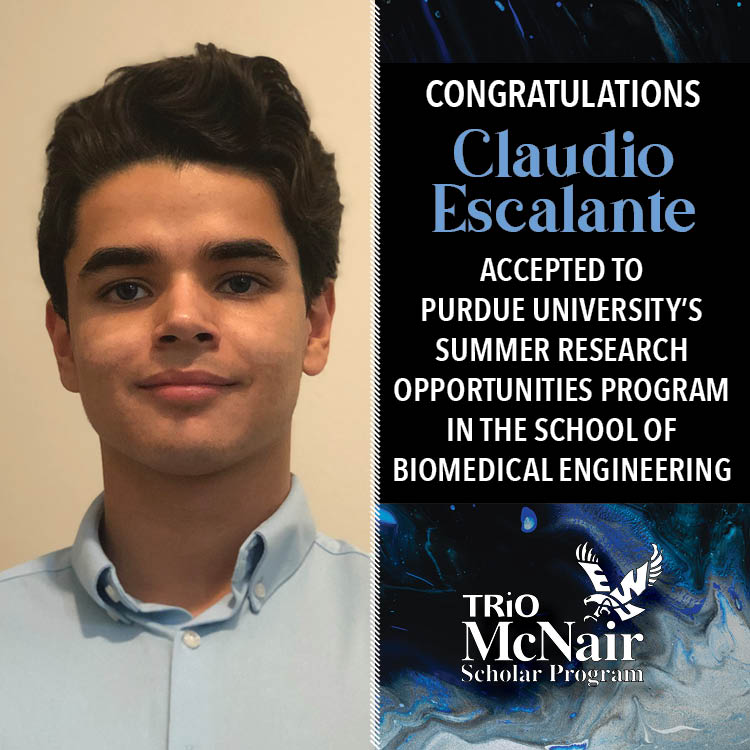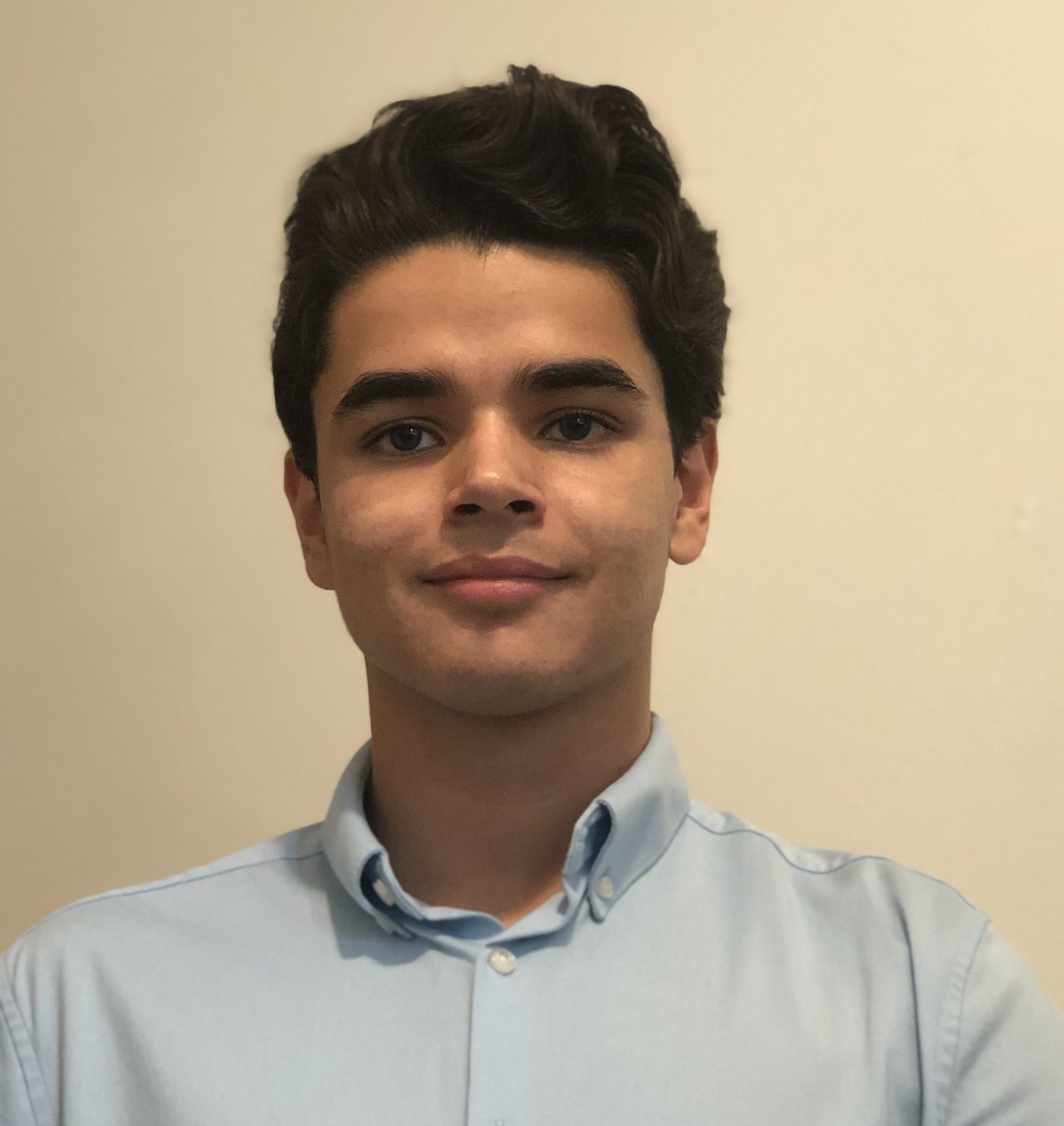Claudio Escalante
Juan Claudio Escalante is a first-generation undergraduate student at Eastern Washington University. Originally from Kennewick, WA, Claudio obtained his Associate of Arts and Science from Colombia Basin College in 2020 before transferring to EWU. He is majoring in Biology with a minor in Spanish. In the winter of 2022, his research interests expanded when he began to do work in Dr. David Daberkow’s lab. Under Dr. Daberkow’s mentorship he has worked on creating electrodes to help contribute to the team’s main objective; to find the effects of oxytocin on dopamine signaling in the rat striatum. For his 2022 McNair Summer Research Internship, Claudio continued to work with Dr. Daberkow to record dopamine with the electrodes they create.
In Summer 2023, Claudio attended Purdue University‘s Summer Research Opportunities Program (SROP). At SROP, Claudio worked with mentor Dr. Tamara Kinzer-Ursem on his research, ”Particle Separation: Harnessing Inertial Microfluids for Precise Particle Sorting”. Claudio’s work utilized the ‘expanded channel microfluidics’ chip design to explore how the size and shape of transport vessels (tubes) effect separation of EColi particles from mammalian cells. Claudio speaks to the immediate use of their work, noting “the outcomes of this research hold significant potential in various fields, including medical diagnostics, drug delivery, environmental monitoring, and nanotechnology research”.
2023 SROP Faculty Research Mentor: Dr. Tamara Kinzer-Ursem
College of Engineering, Purdue University, West Lafayette, IN
Research Title: ”Particle Separation: Harnessing Inertial Microfluids for Precise Particle Sorting”
Abstract: Inertial microfluidics, a technique utilizing fluid flow’s inertial effects at the microscale, enables the manipulation of particles or cells in small channels without relying on external forces or active pumping. This study focuses on capturing particles through inertial microfluidics using the ‘expanded channel microfluidics’ chip design. The outcomes of this research hold significant potential in various fields, including medical diagnostics, drug delivery, environmental monitoring, and nanotechnology research. The microfluidics chip employed in this study was a straight channel chip made of polydimethylsiloxane (PDMS). By strategically expanding a specific region within the straight channel, microvortices are generated, efficiently trapping particles of certain sizes while allowing others to pass through. Previous work in the laboratory utilized boundary layer methods to predict particle trapping based on the fluid flow’s Reynolds number (Re). Experimental validation of these predictions involved using fluorescence microscopy to capture images of particle flow. Fluorescent polystyrene microparticles and acrylic particles of different sizes (1 μm, 7.32 μm, and 20 μm) were tracked during the experiments. In the experiments, particles suspended in water were propelled through polyether ether ketone (PEEK) tubing usinga syringe pump and a 10 mL syringe. Flow conditions were varied between 0.1 and Re ≤ 500. Increasing the Reynolds number selectively trapped particles in the wells, consistent with theoretical predictions. Ultimately, the objective of this study is to successfully separate mixtures of E coli and mammalian cell, represented in this study by 1μm and 20μm particles, with these microfluidic chips.
2022 EWU Faculty Research Mentor: Dr. David Daberkow
Research Title: Determining Dopamine Microelectrode Placement in the Rat Brain
Research Poster & Presentation

Claudio Escalante Accepted into Three Master’s Programs

EWU Scholar Claudio Escalante Accepted to University of Nebraska PhD in Biomedical Engineering
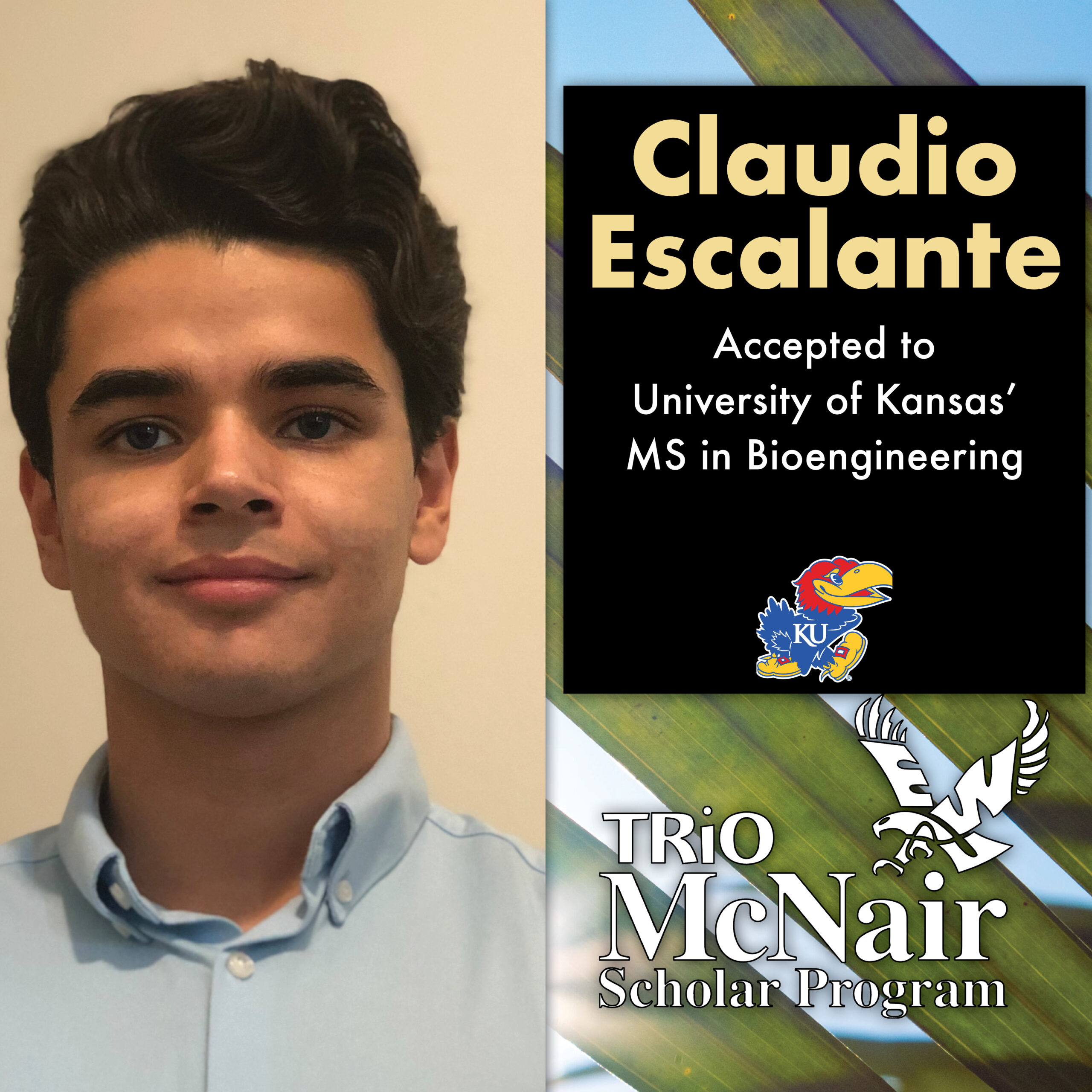
EWU Scholar Claudio Escalante Accepted to University of Kansas’ MS in Bioengineering

Scholar Claudio Escalante Attends 2023 BMES Annual Meeting
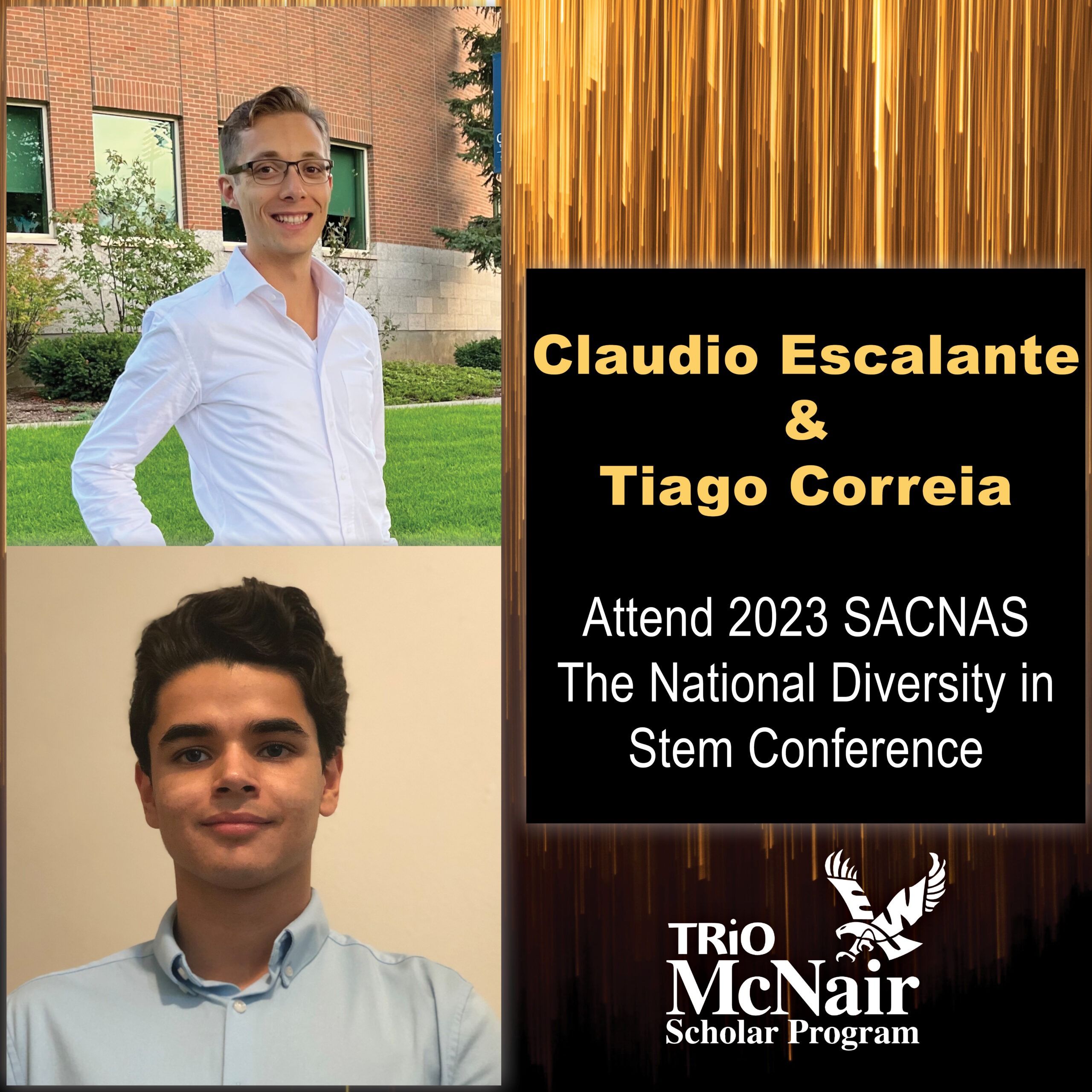
McNair Scholar Tiago Correia and Claudio Escalante Attend 2023 SACNAS The National Diversity in Stem Conference
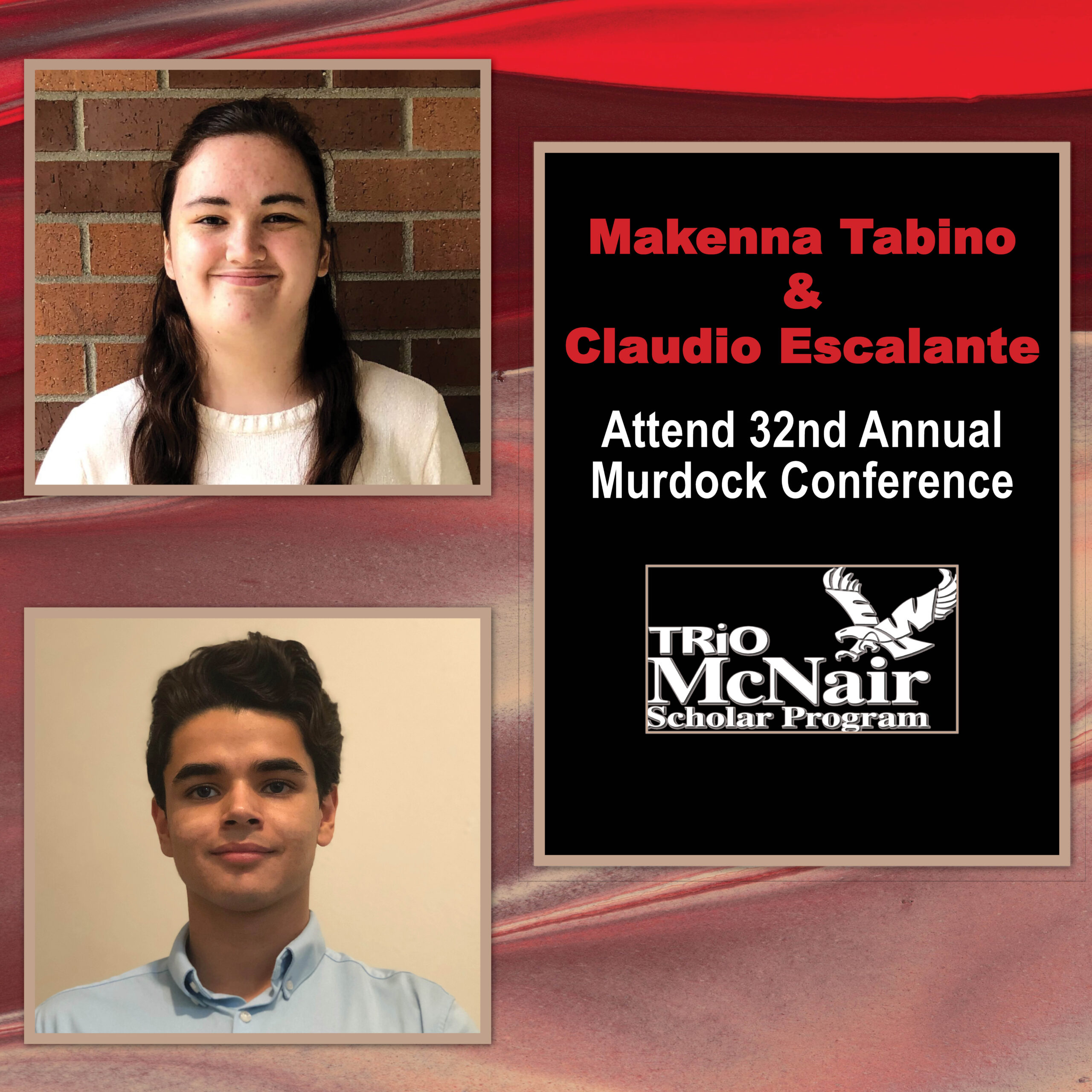
McNair Scholars Makenna Tabino & Claudio Escalante Attend the 32nd Annual Murdock Conference
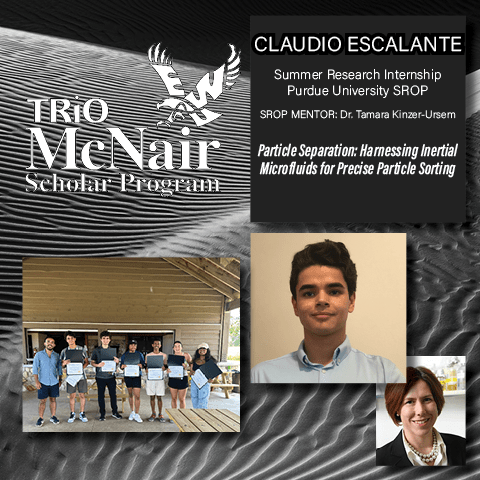
EWU McNair Scholar Claudio Escalante Completes Summer Research Internship
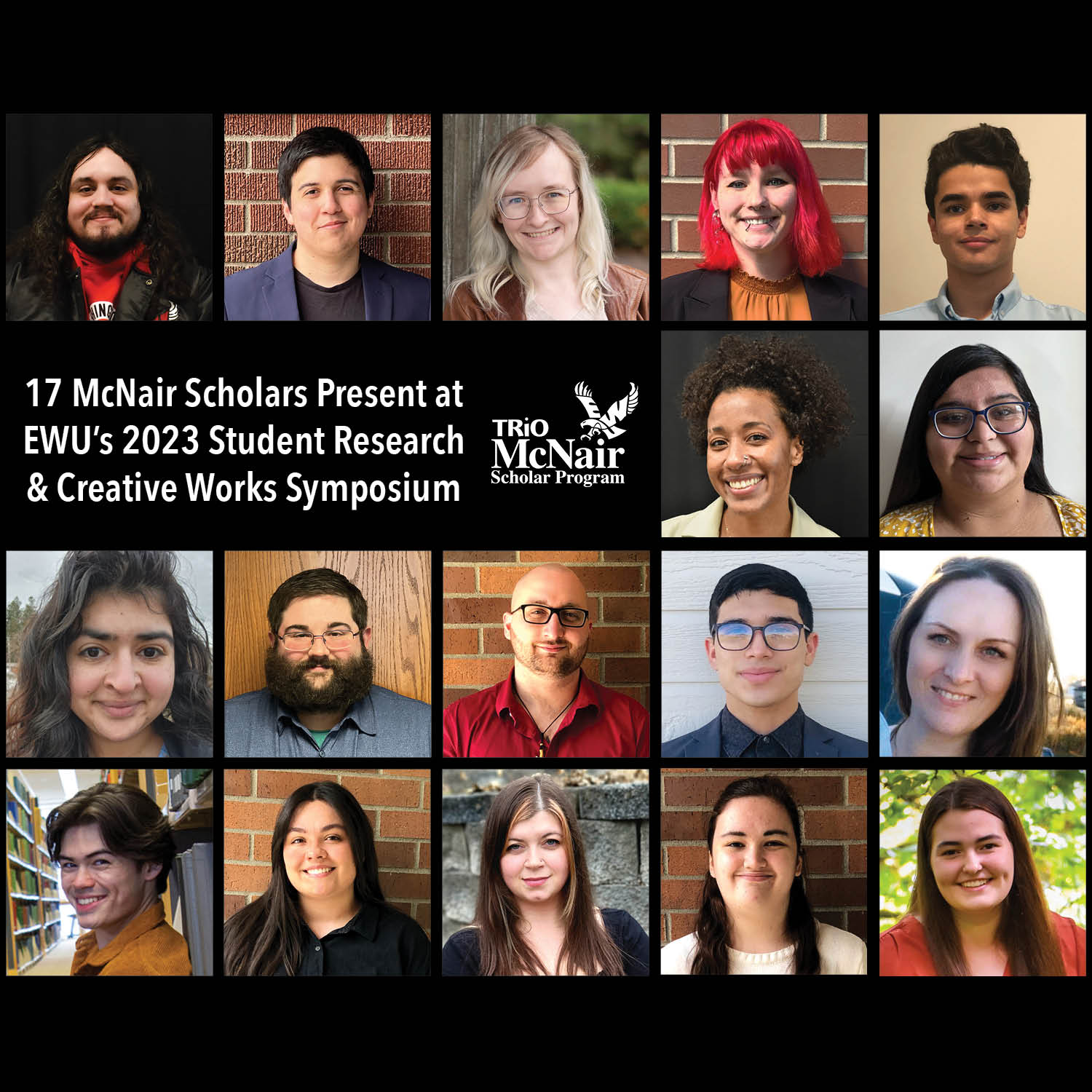
17 McNair Scholars Present at EWU’s 2023 Student Research & Creative Works Symposium
